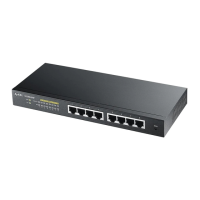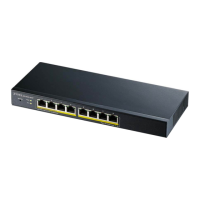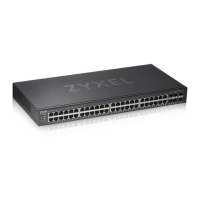Chapter 9 Monitor: VLAN
GS1900 Series User’s Guide
78
9.2.3 VLAN Po rt
Port-based VLANs are VLANs where the packet forwarding decision is based on the destination MAC
address and its associated port. Port-based VLANs require allowed outgoing ports to be defined for
each port. Therefore, if you wish to allow two subscriber ports to talk to each other, for example,
between conference rooms in a hotel, you must define the egress (an egress port is an outgoing port,
that is, a port through which a data packet leaves) for both ports. Port-based VLANs are specific only to
the Switch on which they were created.
Use this screen to view the Switch’s VLAN port settings. Click Mo nito r > VLAN > VLAN > VLA N Po rt to
access this screen.
Fig ure 80 Monitor > VLAN > VLAN > VLAN Port
Accept Frame
Type
This field displays the type that is accepted by the frame.
Specifies the type of frames allowed on a port. Choices are All, Ta g O nly and Unta g O nly.
All accepts all untagged or tagged frames on this port. This is the default setting. Ta g O nly
accepts only tagged frames on this port. All untagged frames will be dropped. Unta g O nly
accepts only untagged frames on this port. All tagged frames will be dropped.
Ingress Filter If set, the Switch discards incoming frames for VLANs that do not have this port as a
member.
VLAN Trunks Enable VLA N Trunking on ports connected to other switches or routers (but not ports directly
connected to end users) to allow frames belonging to unknown VLAN groups to pass
through the Switch.
Table 33 Monitor > VLAN > VLAN > Port (continued)
LABEL DESCRIPTIO N

